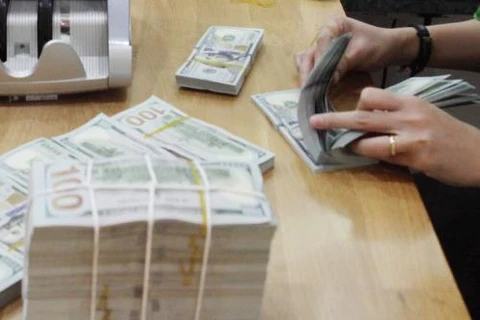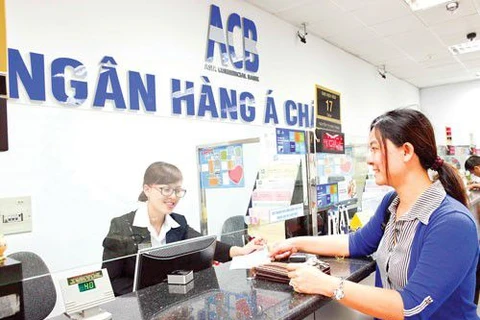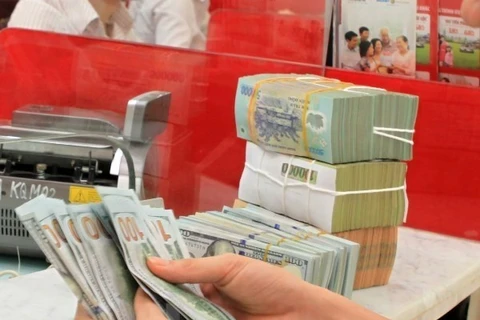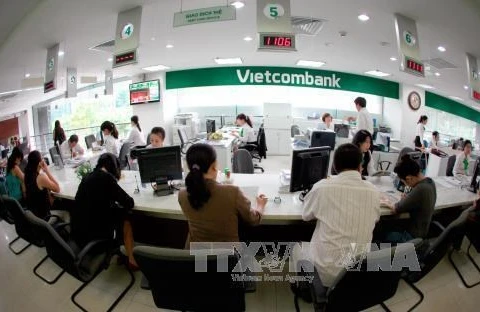Hanoi (VNA) – Deputy Governor of the State Bank of Vietnam (SBV) Nguyen Thi Hong has affirmed that the SBV will direct monetary policy in a proactive, flexible, and cautious manner, and in harmony with fiscal and other macro-economic policies to curb inflation, maintain macro-economic stability, and fuel economic growth.
Addressing the Vietnam Banking Overview Forum 2019 held in Hanoi on May 8, Hong said the SBV aims to increase total payment instruments and credit by around 13 percent and 14 percent respectively this year.
She added that the central bank will also direct interest and exchange rates in a way that suits macro-economic balances, market development and the goals of monetary policy, while using policy tools and interference measures when necessary to stabilise the foreign exchange market.
Former Vice Director of the Central Institute for Economic Management Vo Tri Thanh lauded macro-economic and interest and foreign exchange rates stability as bright spots in the banking landscape last year.
Thanh said the three key tasks for the SBV since 2012 to now are issuing a stable monetary policy to fuel growth, dealing with bad debts, and restructuring banks up to the best practices, which will continue to be its biggest challenges in the time ahead.
He suggested devising a mid-term plan to keep inflation under control, thus better managing interest rates.
Banking expert Can Van Luc called for improving the role of capital market, because the reliance on the banking system for mid- and long-term capital is causing great pressure and risks for the system of credit institutions.
Deputy head of the banking safety supervision division Bui Van Hai said the SBV has directed credit organisations to work out measures to follow stake ownership regulations, as well as deal with violations on overlapping share ownership.
The SBV reported that as of January 31, credit organisations dealt with about 204.4 trillion VND worth of bad debts, or over 40 percent of the total. In late 2018, the rate of bad debts was reduced to below 2 percent.–VNA
Addressing the Vietnam Banking Overview Forum 2019 held in Hanoi on May 8, Hong said the SBV aims to increase total payment instruments and credit by around 13 percent and 14 percent respectively this year.
She added that the central bank will also direct interest and exchange rates in a way that suits macro-economic balances, market development and the goals of monetary policy, while using policy tools and interference measures when necessary to stabilise the foreign exchange market.
Former Vice Director of the Central Institute for Economic Management Vo Tri Thanh lauded macro-economic and interest and foreign exchange rates stability as bright spots in the banking landscape last year.
Thanh said the three key tasks for the SBV since 2012 to now are issuing a stable monetary policy to fuel growth, dealing with bad debts, and restructuring banks up to the best practices, which will continue to be its biggest challenges in the time ahead.
He suggested devising a mid-term plan to keep inflation under control, thus better managing interest rates.
Banking expert Can Van Luc called for improving the role of capital market, because the reliance on the banking system for mid- and long-term capital is causing great pressure and risks for the system of credit institutions.
Deputy head of the banking safety supervision division Bui Van Hai said the SBV has directed credit organisations to work out measures to follow stake ownership regulations, as well as deal with violations on overlapping share ownership.
The SBV reported that as of January 31, credit organisations dealt with about 204.4 trillion VND worth of bad debts, or over 40 percent of the total. In late 2018, the rate of bad debts was reduced to below 2 percent.–VNA
VNA
























